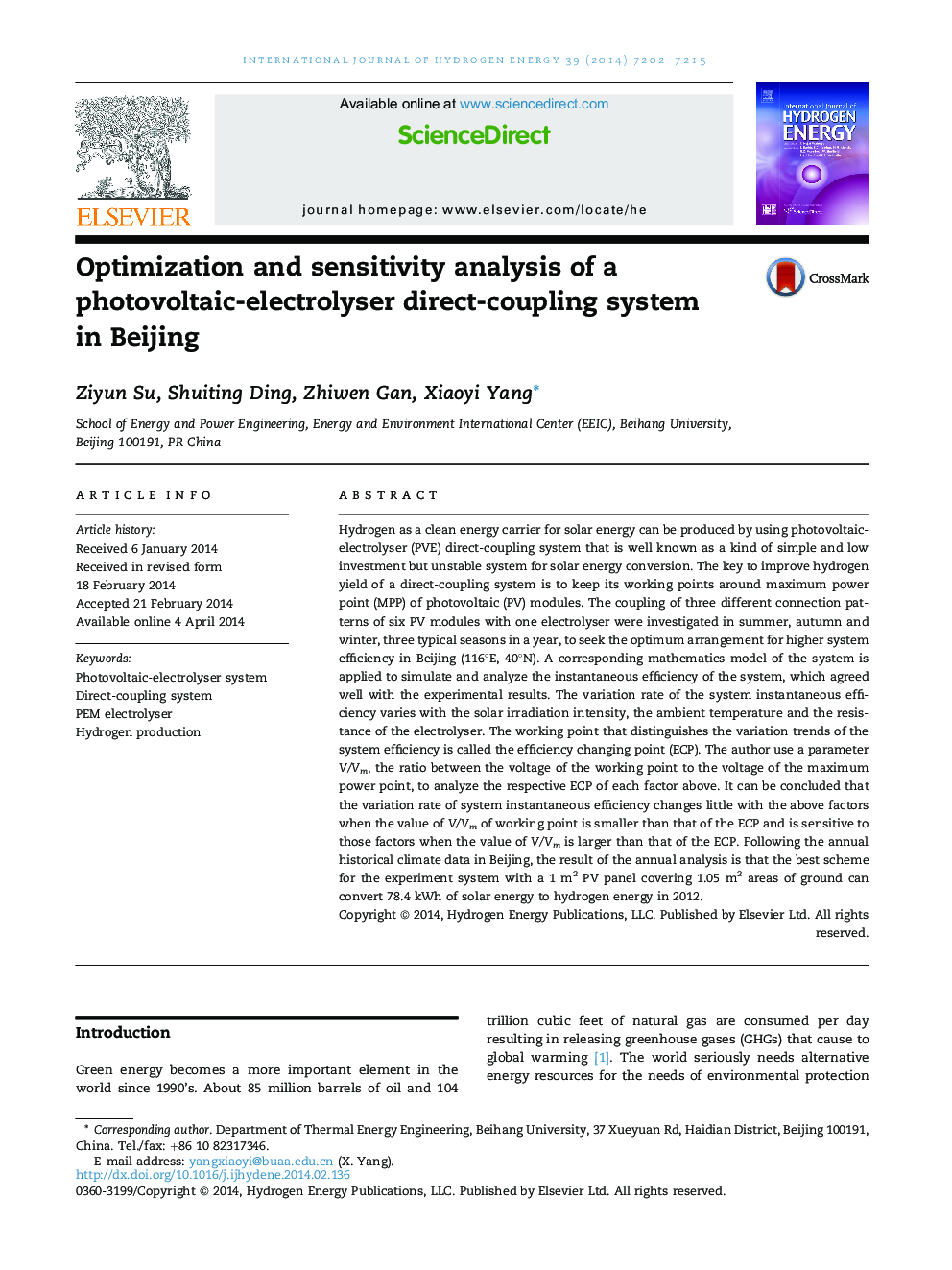| Article ID | Journal | Published Year | Pages | File Type |
|---|---|---|---|---|
| 1272696 | International Journal of Hydrogen Energy | 2014 | 14 Pages |
•A model of the PVE direct-coupling system is agreed with the experimental data.•The PVE direct-coupling system has been operated in Beijing for a year.•Optimization method is setup for the PVE direct-coupling system in practical use.•The interactions of the operation factors with the system efficiency are studied.•Annual analysis of the system operating in Beijing.
Hydrogen as a clean energy carrier for solar energy can be produced by using photovoltaic-electrolyser (PVE) direct-coupling system that is well known as a kind of simple and low investment but unstable system for solar energy conversion. The key to improve hydrogen yield of a direct-coupling system is to keep its working points around maximum power point (MPP) of photovoltaic (PV) modules. The coupling of three different connection patterns of six PV modules with one electrolyser were investigated in summer, autumn and winter, three typical seasons in a year, to seek the optimum arrangement for higher system efficiency in Beijing (116°E, 40°N). A corresponding mathematics model of the system is applied to simulate and analyze the instantaneous efficiency of the system, which agreed well with the experimental results. The variation rate of the system instantaneous efficiency varies with the solar irradiation intensity, the ambient temperature and the resistance of the electrolyser. The working point that distinguishes the variation trends of the system efficiency is called the efficiency changing point (ECP). The author use a parameter V/Vm, the ratio between the voltage of the working point to the voltage of the maximum power point, to analyze the respective ECP of each factor above. It can be concluded that the variation rate of system instantaneous efficiency changes little with the above factors when the value of V/Vm of working point is smaller than that of the ECP and is sensitive to those factors when the value of V/Vm is larger than that of the ECP. Following the annual historical climate data in Beijing, the result of the annual analysis is that the best scheme for the experiment system with a 1 m2 PV panel covering 1.05 m2 areas of ground can convert 78.4 kWh of solar energy to hydrogen energy in 2012.
